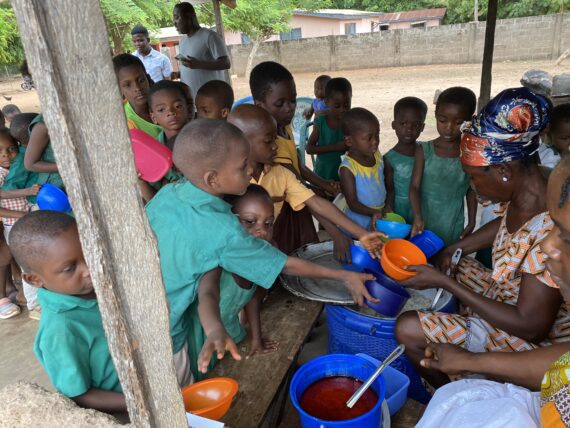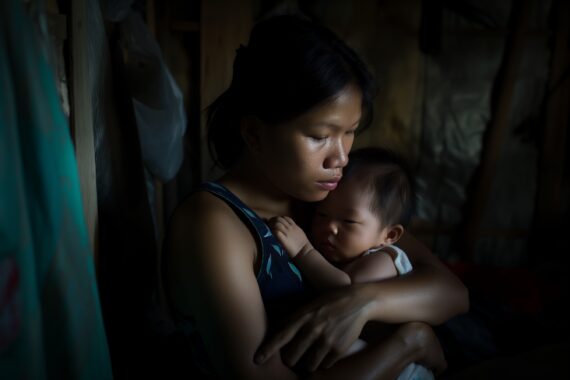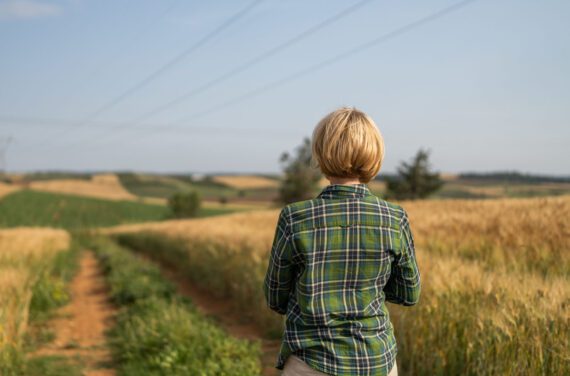“Have you seen our kitchen?” Blessing Abotsi, headmistress at Kpenoe Primary School, eagerly asked. Immediately, I scanned my brain for a mental picture of a stove and refrigerator. I quickly realized that was not what I should expect in a Ghanaian village. She meant the small wooden building with a fire pit to the right. “Yes,” I replied, “I did see the kitchen.”
During my school visit in early June, Ms. Abotsi told me that the school has 368 students, ages 3-13. The youngest were starting to be dismissed for lunch as we talked, so I followed them to the front of the lunch line. It was Monday, and the children looked forward to their favorite meal – rice and stew made with tomatoes and small fish. For some, this followed a breakfast eaten at home or brought to school. Others likely were receiving their first meal of the day.
Two cooks, Beatrice and Kaecsie, had arrived at 8 a.m. to make lunch over a wood fire. Using a long-handled wooden tool, one of them bent over the fire and stirred the stew. Then sitting in front of the storage building, they ladled food into bowls brought by the students. Only a few children had spoons so most ate by scooping the mixture with their fingers. They talked and ran about the schoolyard, playing and eating at the same time. Before returning to class, they rinsed their dishes under the spigot of a large jug, and some children scooped water in their hands for a quick drink.
Each day has its own menu. The week starts with rice and stew, then beans on Tuesday followed the next day with banku, an okra stew with ground nuts or palm nuts. Rice and beans are served on Thursday and the week ends with mashed yam and stew.
Beatrice and Kaecsie said the government pays for the food and all children are allowed to eat, but sometimes the food runs short. Knowing which students are without food at home, they often give children money from their own meager resources to buy food after school. I told them it’s the same in the United States and we commiserated together about hungry children.
This was my second visit to Kpenoe, after being introduced to Ghana in 2002. Two decades ago, I saw signs of malnourishment and illness among the children. The next generation looks much healthier. I believe that part of this change is the launch of the Ghana School Feeding Program in 2005.
In partnership with local NGO 4-H Ghana, on behalf of Bread for the World, I convened a meeting of regional and local leaders to consider ways to supplement the lunches locally. Rejoice Adzagbo, regional coordinator, reported that the meals program has increased school attendance, improved students’ nutrition, and supported local farmers. Others noted that the country is feeling the pressure of inflation on food costs, making the meals more difficult to sustain at a quality level. Everyone present agreed to begin a 4-H school gardening program in Kpenoe, which will enable the local community to supplement the school lunches with vegetables. A 4-H garden can become a point of community pride and it can serve as a model for other villages in Ghana’s Volta Region.
Ghana’s School Feeding Program is considered a successful model. Partners like the World Food Programme are monitoring and evaluating it to help make the program as effective as possible. Bread for the World’s work to influence support for nutrition programs in the farm bill will help villages like Kpenoe succeed in supporting children’s health and education, and in presenting schools as new markets for smallholder farmers.
Kpenoe is one example of the importance of Bread’s focus on the farm bill this year. Having played with the children, watched the cooks serve lunch to them, and heard from local leaders, I saw how our advocacy at Bread results in significant change for families and communities.
Sandy Lindahl is a donor representative at Bread for the World



